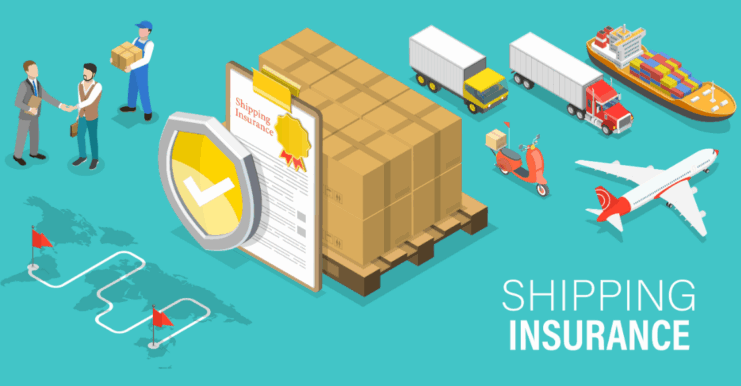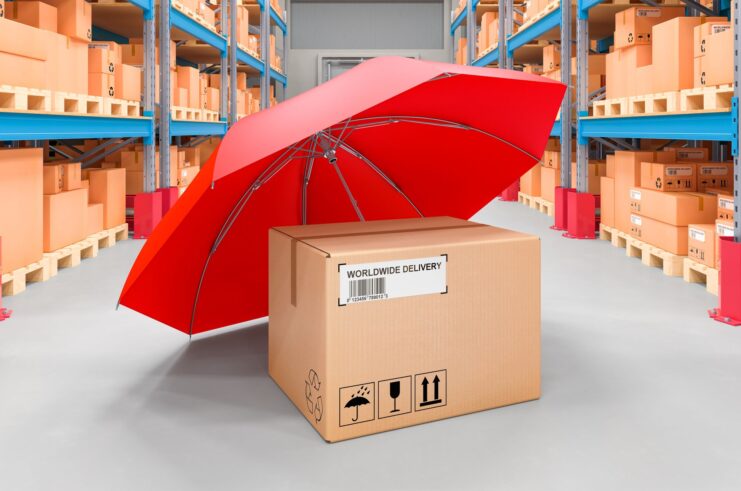When you ship something valuable, there’s always that quiet moment of hesitation before hitting “confirm.” You think about whether the box will arrive safely, what happens if it doesn’t, and if the carrier will actually cover your loss. That’s exactly where shipping insurance comes in – a safeguard that turns that moment of doubt into peace of mind.
I’ve shipped everything from camera lenses to collectible guitars, and I’ve seen firsthand how unpredictable logistics can be. Packages get lost, weather delays happen, and sometimes, damage is just part of the game. The real question isn’t if something might go wrong, it’s whether you’re protected when it does.
The Basics: What Shipping Insurance Really Covers

At its core, shipping insurance is a financial safety net for goods in transit. It compensates you for the declared value of your shipment if it’s damaged, lost, or stolen before it reaches the destination. That could mean replacing a $1,200 laptop that disappeared between warehouses or getting reimbursed for antique ceramics that broke mid-flight.
Every carrier, including USPS, UPS, FedEx, and DHL, includes some limited coverage by default. USPS Priority Mail, for instance, usually includes $100 in insurance. UPS and FedEx provide similar baselines for domestic packages. But once you go beyond that value, you need extra protection.
For personal senders, the difference between covered and uncovered loss can be dramatic. For businesses, it can be the difference between profit and a painful refund.
How a Small Mistake Costs Big
A few years ago, I shipped a signed electric guitar worth $3,000 to a collector in Texas. I relied on the carrier’s basic coverage, figuring it would be fine. It wasn’t. The case arrived cracked, the neck splintered, and the shipping label smeared beyond recognition. The carrier offered $100, their policy maximum, without declared value.
That experience pushed me to dig deeper into shipping insurance providers. Services like Secursus let you insure both domestic and international shipments at competitive rates, with coverage extending beyond what carriers typically offer. What I liked most was how transparent it was: instant quotes, clear claim steps, and actual human support.
If you ship often, especially high-value goods, third-party insurance isn’t a luxury. It’s smart risk management.
Domestic vs. International Shipping: The Big Difference

Domestic coverage is usually more predictable. Within the United States, carriers maintain strong internal tracking systems, faster claims, and easier customer support. But once your package crosses borders, things change.
International shipping insurance often faces:
- Multiple handlers, such as carriers, customs agents, and local couriers
- Language barriers and varying documentation standards
- Longer claim timelines due to cross-border verification
If you’re shipping from the U.S. to Europe, for instance, a standard carrier claim might take weeks to process. A dedicated insurer can step in faster because their network is designed to work across regions.
For e-commerce businesses, having global insurance is non-negotiable. Platforms selling worldwide, from Etsy stores to tech resellers, use dedicated insurance for every order, precisely because cross-border loss rates are higher.
How Claims Actually Work
Most people never read the fine print until something breaks. The claim process usually looks like this:
- Proof of value – an invoice or payment receipt showing the item’s worth.
- Proof of loss or damage – photos of the damaged package, tracking info, or a carrier incident report.
- Proof of shipment – label, tracking number, and sender info.
Once you submit, the insurer reviews the claim, verifies the details with the carrier if needed, and reimburses the declared value.
A key mistake people make is waiting too long. Each carrier and insurer has a filing deadline, usually between 15 and 30 days for domestic shipments, and up to 60 days for international. Miss that window, and even the best claim will get denied.
Cost vs. Coverage: When It’s Worth Paying Extra
You don’t need to insure every $20 shipment. But as soon as your parcel’s value exceeds the default carrier coverage (typically $100), it’s worth doing the math.
Average add-on insurance costs:
- USPS: around $2.65 for $200 declared value
- UPS: about $1.15 per $100 declared value beyond the first $100
- Third-party insurers: often 0.6–1% of the total declared value, sometimes cheaper for bulk users
For small businesses shipping daily, third-party plans are cost-effective because they offer blanket coverage, one policy covering multiple packages, often with automated claim tools.
Tip: If your monthly shipping volume is high, negotiate a commercial rate. Insurers love consistency, and you’ll get better terms than paying per package.
Hidden Gaps in Carrier Insurance

Carrier insurance isn’t bad, but it comes with exclusions. Items like jewelry, art, electronics, or live goods might have limited coverage or none at all.
You’ll also find that carriers interpret “damage” differently. A dented corner on a box may not qualify unless the contents are affected. Even then, if the item wasn’t packed according to carrier standards, claims get denied quickly.
This is where specialized insurers outperform. They understand real-world conditions. You just declare the item’s value and pack it securely, and they handle the rest.
Why Businesses Can’t Ignore It
If you run an online store, shipping insurance isn’t optional. It’s part of your brand promise. A single negative review about a lost or damaged order can do more harm than the cost of coverage.
Think of it this way: you’re not just insuring products, you’re protecting trust. When customers know you guarantee delivery safety, it boosts conversion rates and repeat business.
I’ve seen small Etsy sellers double their monthly sales after adding insured shipping options. Buyers simply felt safer checking out.
Comparing Domestic and International Claim Timelines
| Shipping Type | Average Claim Time (Carrier) | Average Claim Time (Third-Party Insurer) |
| Domestic (USA) | 10–14 business days | 3–7 business days |
| International (EU/Asia) | 30–45 business days | 10–20 business days |
| High-value goods (over $2,000) | Up to 60 days | 14–25 business days |
The difference lies in how specialized insurers pre-verify values and streamline the process. They don’t wait for multiple carrier responses before payout.
Practical Tips for Smarter Coverage
If you’re planning to ship regularly, a few habits can save you both money and headaches:
- Always declare the correct value. Under-declaring to save on premiums is risky because your reimbursement will match what you declared.
- Take photos before shipping. Documenting the packaging and product helps prove proper handling if there’s damage.
- Use strong packaging materials. Insurers can reject claims if items weren’t packed well enough for transport.
- Keep your tracking data. Even screenshots help in case a carrier updates tracking after loss.
- Bundle shipments smartly. For multiple small parcels, one insured batch may cost less than insuring them separately.
These steps take minutes but can save you weeks of waiting later.
Peace of Mind Has a Price, But It’s Worth It

Shipping insurance isn’t about expecting failure. It’s about respecting reality. Even the most reliable carriers lose packages, and accidents happen. For me, it’s become a rule: if it would hurt to lose it, I insure it.
Whether you’re sending one rare collectible or 100 customer orders a week, having reliable coverage keeps your business and sanity intact. In the end, that small premium is less about money and more about sleeping well while your shipment travels the world.

